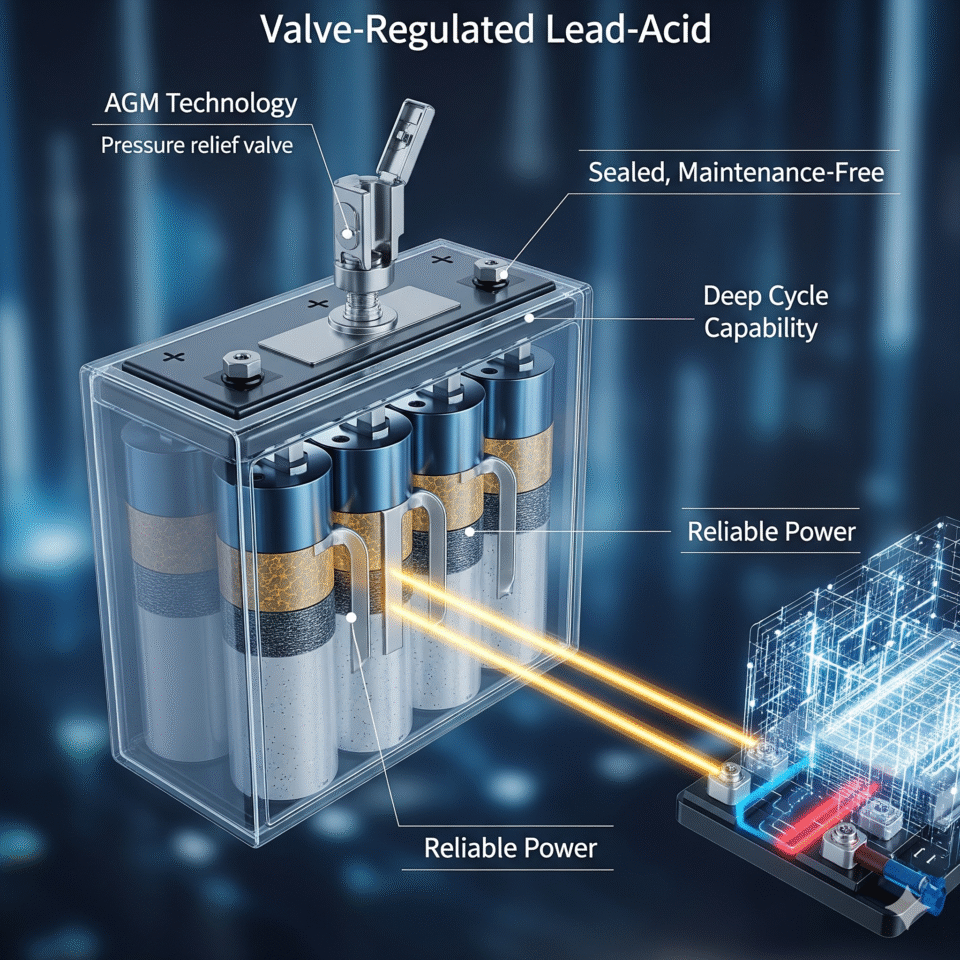Introduction: The Growing Demand for Reliable Power
In today’s world, uninterrupted power supply has become a necessity for both homes and businesses. From hospitals to data centers, even a few seconds of power failure can cause serious problems. Traditional lead-acid batteries have served as backup solutions for decades, but they come with high maintenance requirements, safety concerns, and limited efficiency. This is where VRLA technology steps in as a smarter alternative.
VRLA, or Valve Regulated Lead Acid technology, has become a game-changer in energy storage. It addresses the shortcomings of traditional batteries by offering sealed designs, reduced maintenance, and higher safety standards. However, many people still struggle to understand how VRLA works and why it is becoming the standard choice for backup power.
What is VRLA Technology?
VRLA technology stands for Valve Regulated Lead Acid technology. It is a type of lead-acid battery that is sealed and equipped with a pressure relief valve. Unlike conventional lead-acid batteries that require frequent topping up of water, VRLA batteries are designed to be maintenance-free.
There are two main types of VRLA batteries:
1. Absorbent Glass Mat (AGM)
- Uses glass fiber mats to absorb the electrolyte
- Offers low resistance and high efficiency
- Popular in UPS systems, emergency lighting, and solar storage
2. Gel Cell Batteries
- Uses silica to turn electrolyte into a gel
- Offers higher resistance to vibration and extreme temperatures
- Common in renewable energy systems and deep-cycle applications
Both of these designs ensure that VRLA batteries are spill-proof, safe, and reliable, making them suitable for sensitive environments like hospitals, offices, and residential use.
Why VRLA Technology is Needed
Traditional lead-acid batteries face several issues:
- Frequent maintenance and water refilling
- Gas emissions during charging
- Risk of acid leakage
- Bulky size and limited safety
The need for a cleaner, safer, and low-maintenance battery solution gave rise to VRLA technology. By sealing the design and adding pressure relief valves, VRLA batteries minimize risks while delivering the same energy capacity as conventional batteries.
How VRLA Technology Works
The working principle of VRLA technology is based on oxygen recombination. When the battery charges, oxygen generated at the positive plate migrates to the negative plate, where it recombines into water. This prevents the loss of water inside the battery, which is why no refilling is required.
The pressure relief valve ensures that excess gas is released safely if overcharging occurs. This makes VRLA batteries
Advantages of VRLA Technology
Low Maintenance
No water refilling is needed, which saves time and reduces operational costs.
Enhanced Safety
Spill-proof design reduces risks of acid leakage and contamination.
Compact and Versatile
Available in different sizes for various applications, from small electronics to large power systems.
Long Service Life
VRLA batteries can last 5–10 years depending on usage and maintenance conditions.
Better Performance in Enclosed Spaces
No harmful emissions, making them ideal for indoor use
Applications of VRLA Technology
VRLA technology is widely used in industries where reliable backup power is essential. Common applications include:
Data Centers
Ensures uninterrupted power supply for servers and network equipment.
Telecommunications
Provides backup power for mobile towers and communication networks.
Healthcare
Critical in hospitals where life-support equipment requires continuous power.
Renewable Energy
Used in solar and wind energy storage systems.
Automobiles
AGM batteries are used in modern cars for start-stop systems.
Emergency Lighting and Security
Ensures reliability during power failures in public places.
Challenges and Limitations of VRLA Technology
While VRLA technology offers many benefits, it is not without challenges:
- Temperature Sensitivity: High heat reduces lifespan
- Cost: More expensive than traditional lead-acid batteries
- Limited Deep-Cycle Performance: Not always ideal for long discharge cycles
- Overcharging Risks: Can shorten battery life if not managed properly
Future of VRLA Technology
As the demand for renewable energy and sustainable power grows, VRLA technology continues to play an important role. However, it also faces competition from Lithium-ion batteries, which offer higher efficiency and longer cycle life.
Still, VRLA batteries remain popular due to:
- Lower upfront cost
- Proven reliability
- Easier recycling compared to lithium batteries
With advancements in design and materials, VRLA technology is expected to remain a strong player in energy storage solutions for the next decade.
Conclusion: Is VRLA Technology Right for You?
If you are looking for a reliable, safe, and low-maintenance battery solution for backup power, VRLA technology is an excellent choice. Whether it’s for your home, office, or industrial use, VRLA batteries provide a balance between cost, safety, and performance.
While they may not completely replace lithium-ion batteries in the future, they will continue to dominate sectors like telecom, healthcare, and emergency power due to their trustworthiness and proven track record.
FAQs on VRLA Technology
Q1: What does VRLA stand for?
VRLA stands for Valve Regulated Lead Acid technology, a type of sealed battery.
Q2: How long do VRLA batteries last?
On average, they last 5–10 years depending on usage and maintenance conditions.
Q3: Are VRLA batteries safe for indoor use?
Yes, they are sealed and maintenance-free, making them safe for enclosed spaces.
Q4: What is the difference between AGM and Gel VRLA batteries?
AGM batteries use glass mats to absorb electrolyte, while Gel batteries use silica-based gel for better temperature resistance.
Q5: Can VRLA batteries be recycled?
Yes, like other lead-acid batteries, they are recyclable and have a lower environmental impact compared to some alternatives


